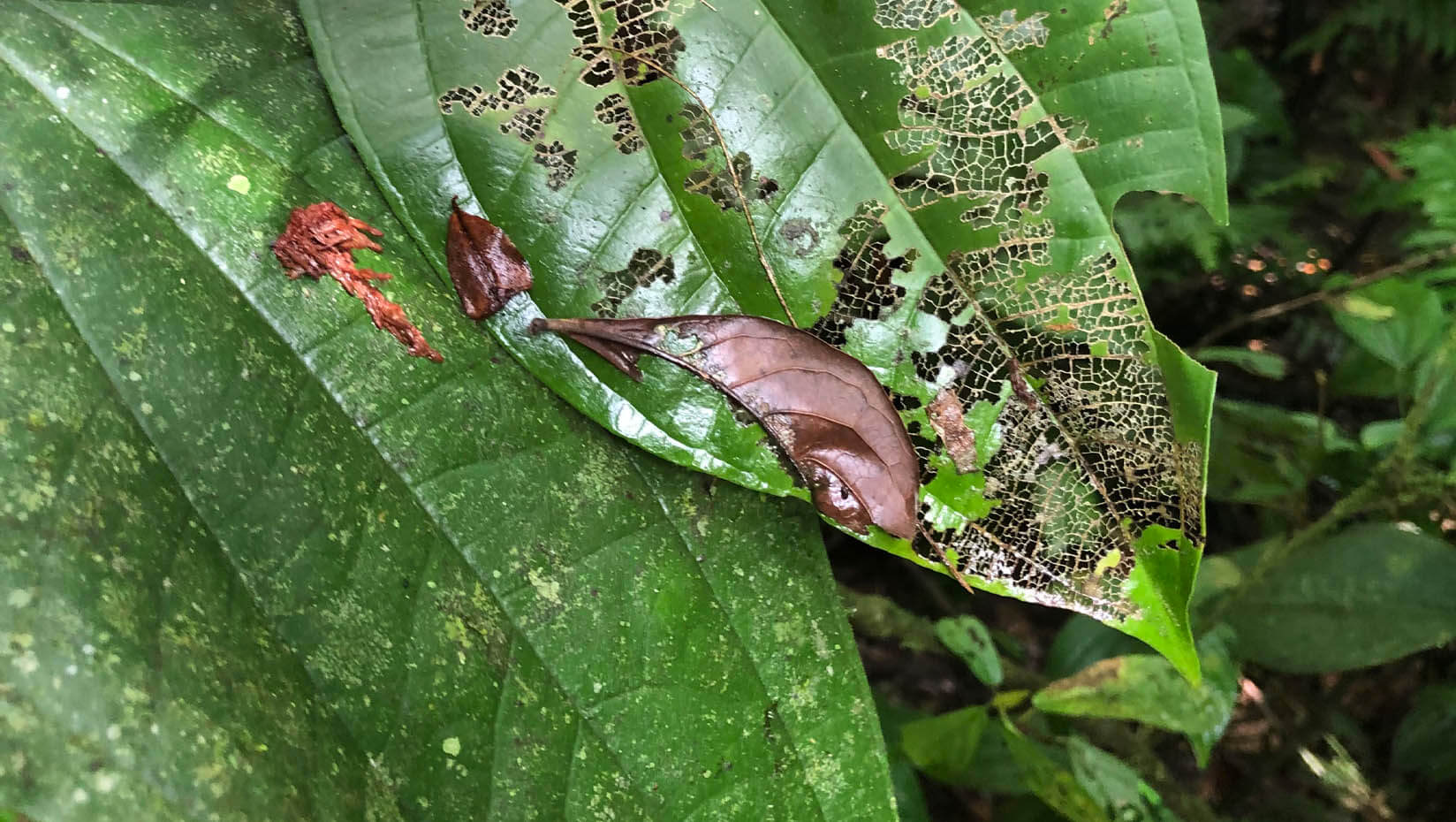
Insects cause more damage to leaves in recent history than millions of years ago, study finds
Insect herbivores have caused more damage to plant matter from leaves in recent history than millions of years ago, according to a new study led by a University of Maine postdoctoral researcher.
Despite global insect decline and biodiversity loss fueled by human activity, the frequency of leaf damage by insects among forest plants in recent history, post-1955, is more than twice that of vegetation from the Pleistocene, 2.06 million years ago, and the Late Cretaceous period, 66.8 million years ago. The unprecedented increase in insect damage on leaf matter could pose negative effects on plant productivity and forest health.
To conduct their study, Lauren Azevedo-Schmidt, a postdoctoral researcher with UMaine’s Climate Change Institute, and her colleagues collected leaf samples deposited within sediment across three modern forest ecosystems — Harvard Forest in Massachusetts, the Smithsonian Environmental Research Center in Maryland, and La Selva in Costa Rica — and compared them to previously published leaf litter and fossil data.
The research team, which also includes Emily Meineke of University of California, Davis and Ellen Currano of the University of Wyoming, used radiocarbon dates to verify the ages of modern leaves along with quantifying the frequency and diversity of insect damage in each sample.
The causes of this increase in leaf damage due to insect herbivores and the specific consequences of it remain unknown. However, researchers believe widespread change influenced by human activity, such as the rate of global warming, urbanization and the introduction of invasive plants and insects, could be driving the uptick. Human activity may have drastically changed how insect herbivores are interacting with their food source, the researchers say.
The research team published their findings in Proceedings of the National Academy of Sciences of the United States of America.
“Humans understand that climate is always changing and that the Earth has previously been hotter, but we often can’t grasp the ‘oddity’ of modern climate change,” Azevedo-Schmidt says. “The geologic record reported here should have supported comparable levels of insect herbivory, but it didn’t because humans weren’t present in our post-industrial revolution capacity. This shows the heartbreaking reality that humans have a much higher impact on forest ecosystems than increased atmospheric CO2 alone. However, we can work to minimize our impacts on forest ecosystems by considering the intersection of these findings.”
The researchers also found that the damage caused by insects in leaf samples from recent history is slightly more diverse than that in fossilized leaves. The increase in leaf damage diversity, however, is not as drastic as the spike in damage frequency.
Researchers examined total damage frequency and diversity along with various types of damage including specialized, piercing and sucking, surface feeding, hole feeding, galling, mining, skeletonization, margin feeding and specialized damage. In addition to discovering an overall uptick in total damage frequency, the team also found an increase across all groupings of damage.
“Increased insect feeding can’t be explained by one group of insects but rather, all groups of feeding damage analyzed here,” Azevedo-Schmidt says. “This suggests that all insect herbivores within these three modern forests are increasing their feeding damage; complicating the story as we can’t simply blame one species or group.”
No correlation was identified between damage diversity and frequency, according to researchers. The drivers behind the uptick in damage diversity are also unknown.
“This is interesting because it suggests that insect diversity isn’t influencing insect feeding frequency and that other drivers are responsible for the drastic increase we are seeing,” Azevedo-Schmidt says.
According to researchers, insects and plants possess the most diverse lineages on the planet, and how they interact has evolved over millennia in response to natural and unnatural causes.
How plant-insect relationships change over time, including the extent to which the latter feeds on the former, has implications for biodiversity, plant functionality and mortality, and carbon balance in forests — the loss of plant life can decrease the ability for a forest to absorb atmospheric carbon dioxide through photosynthesis.
“This study is the first to compare similar records of plant-insect interactions across modern and fossil datasets,” Azevedo-Schmidt says. “These findings highlight the importance of humans interacting with landscapes and although climate change influences ecosystem processes, it is not the only factor we need to consider. Humans are agents of disturbance and dispersal, greatly influencing the natural world around us.”
Contact: Marcus Wolf, 207.581.3721; marcus.wolf@maine.edu
